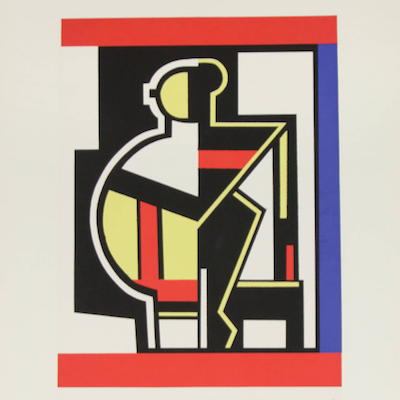
Details
Artist
Styles
Original woodcut and lithograph in colors on Echizen Kozo paper - Signed in pencil, dated and numbered, verso // Kyoto-wa by Al Held, created in 1985, is a limited edition print combining woodcut and lithograph techniques on Echizen Kozo paper. This artwork exemplifies Held’s fascination with geometry and spatial relationships, featuring an arrangement of overlapping geometric forms and dynamic lines. The use of vibrant colors such as yellow, blue, and red within the composition enhances the visual perception of depth and movement. The print’s large size (69.4 cm × 102.2 cm) and its precise, structured design invite viewers to explore the balance and interplay between shapes and space, conveying a sense of energy and dimensionality.
Kyoto-wa, 1985
form
Medium
Size
69.4 x 102.2 cm
- Inches
- Centimeters
Edition
Price
Details
Artist
Styles
Original woodcut and lithograph in colors on Echizen Kozo paper - Signed in pencil, dated and numbered, verso // Kyoto-wa by Al Held, created in 1985, is a limited edition print combining woodcut and lithograph techniques on Echizen Kozo paper. This artwork exemplifies Held’s fascination with geometry and spatial relationships, featuring an arrangement of overlapping geometric forms and dynamic lines. The use of vibrant colors such as yellow, blue, and red within the composition enhances the visual perception of depth and movement. The print’s large size (69.4 cm × 102.2 cm) and its precise, structured design invite viewers to explore the balance and interplay between shapes and space, conveying a sense of energy and dimensionality.
What is Cubism?
Cubism is an art movement that aimed to depict multiple perspectives of objects or figures within a single picture. Artists Georges Braque and Pablo Picasso pioneered this style around 1907. The name Cubism emerged from their use of geometric shapes and outlines that often resembled cubes, breaking objects down into abstracted forms.
















